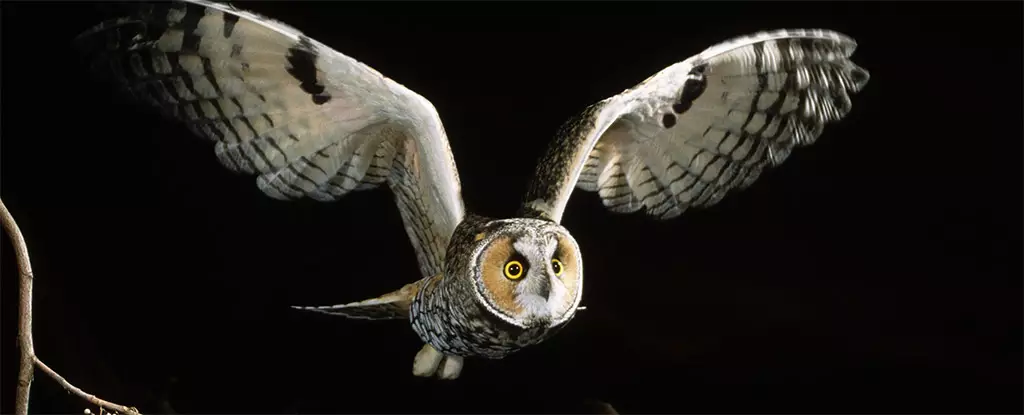The long-eared owl, scientifically termed as Asio otus, stands out in the avian world not merely for its striking appearance but also for the hidden truths that its stunning feathers reveal. With its charming ear tufts and subtle herringbone patterns, this nocturnal hunter has mastered the art of camouflage within its woodland dwelling. Yet, beneath the surface of this natural beauty lies an astonishing phenomenon: fluorescent pink wing feathers that defy conventional understanding. This revelation urges us to investigate deeper—not only what these colors signify but also how they embody the intricate web of survival and communication in the animal kingdom.
The Science Behind the Glow
Recent research led by ornithologist Emily Griffith throws light on these vibrant pigments. In a meticulously conducted study spanning Spring 2020, Griffith and her team analyzed 99 long-eared owls, gathering feathers as the birds journeyed through Michigan’s Upper Peninsula. Their findings unveiled that the fluorescent glow in the inner wings is produced by pigments known as porphyrins. These pigments are not merely colorful adornments; they serve a purpose. Owls, equipped with the capability to perceive ultraviolet light, can detect magenta fluorescence that goes unnoticed by humans. Such photonic properties allow these birds to communicate essential information to each other, effectively turning their feathers into a complex language spoken in the spectrum invisible to most mammals, including their primary prey—small mammals like rodents.
These findings provoke a reconsideration of the natural world. If visual cues that are undetectable to most of the food web can serve critical survival and reproductive roles, what else might be hidden in the spectrum? This study hints at the rich, unseen narratives that play out in nature. It encourages us to question our perception of reality, suggesting that our understanding of animal interactions remains partial, limited by the constraints of human vision.
Fluorescence as an Honest Signal
One of the most provocative implications of Griffith’s research relates to the concept of honest signaling in the animal kingdom. The study highlighted a correlation between the age, sex, and health of the owls based on the concentration of fluorescent pigments in their feathers. Interestingly, older birds exhibited higher levels of these glowing pigments than their younger counterparts. Moreover, females, distinguished by their darker feathers, demonstrated a more vivid fluorescence than males. This discrepancy raises questions that ripple through the heart of evolutionary biology: Can we consider these pigments as a signal of fitness, one that provides insight into the reproductive potential of individuals?
Such findings insinuate a more significant evolutionary implication: the evolution of signaling systems in which only the fittest individuals can afford to display striking features, regardless of whether these features are physical or chemical. In the case of the long-eared owl, the ability to flaunt fluorescent feathers not only aids in attracting mates during courtship flights but also serves as a beacon of genetic and personal health. This subtext of competition and natural selection is a stark reminder of the relentless drive for survival and reproduction that permeates the animal kingdom.
The Intriguing Gender Dynamics
Yet, one cannot help but wonder why females possess such pronounced fluorescence. While males engage in courtship displays, females are typically associated with incubation and limited movement. Griffith’s findings suggest that the increased fluorescent pigments in females may serve another purpose: temperature regulation. The hypothesis that these pigments assist in heat retention, especially during nesting, underscores the beauty of adaptive evolution, ever striving to reconcile the various pressures of survival and reproductive success.
This intricate interplay between form and function suggests a fascinating narrative about gender roles and responsibilities in long-eared owls. Females, with their luminous wings, may embody a blend of allure and practicality, working simultaneously to attract mates while ensuring their biological imperative to incubate. This complexity offers rich ground for reflection on how societal roles manifest even in the animal kingdom and how multifaceted the concept of ‘beauty’ can be.
The long-eared owl, with its deceptively simple appearance, serves as a powerful reminder of nature’s depth and complexity. By examining its fluorescence, we unravel a tapestry woven from elements of survival, health, and communication, illuminating the often-unseen dynamics that govern life in the wild.

